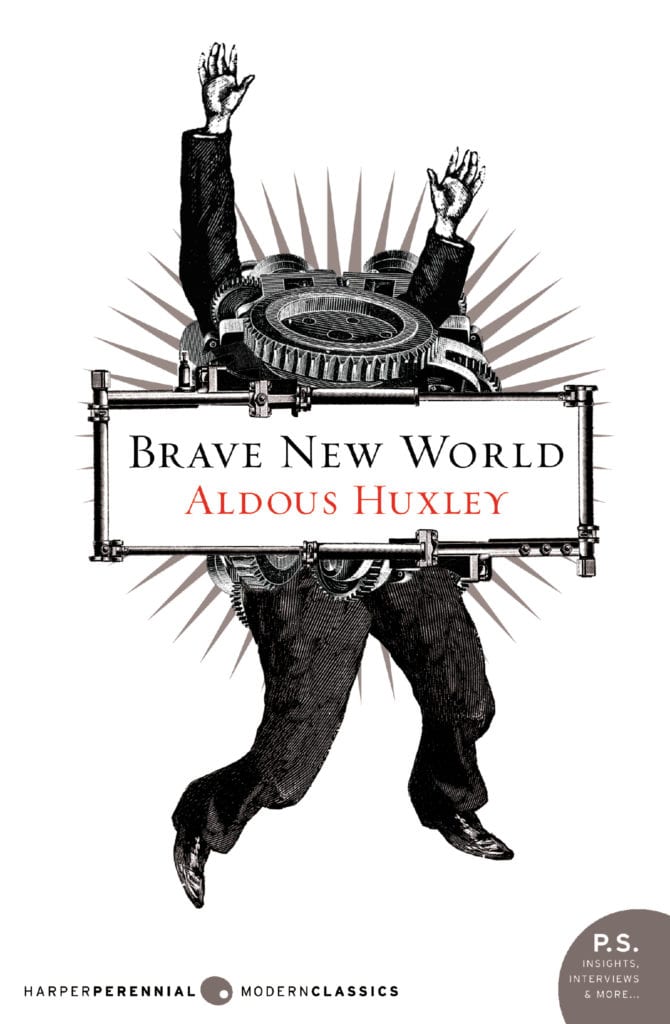Whether you’ve been teaching the same novel for years or are adding a brand-new one to your syllabus, sometimes it can be tough to think of engaging discussion questions, writing prompts, and activities. That’s why we love the 100+ free teaching guides available from HarperCollins (for almost any novel you can think of!). Thorough and well written, they often provide just the dose of inspiration that we need.
Below, we share excerpts from eight of our favorite discussion guides so you can get a sneak peek—but definitely check out the full list, too.
Brave New World
Activity: Pull Discussion Questions out of a Hat
Write your favorite questions from the Brave New World teaching guide on slips of paper and have students pull them out of a hat. Throughout the discussion, each student has the responsibility of asking their question.
Sample Discussion Questions:
- The World State’s motto suggests that community, identity, and stability are the most important qualities in their society. What do you believe are the three most important values for a society? Explain your answer.
- Explain the “conscription of consumption” (p. 49). How are citizens conditioned to become consumers? Why would appreciating culture or nature be at odds with consumption?
- According to Mond, what is dangerous about science? What limits are imposed on scientific inquiry?
Activity: Free-write With a Partner
Let students free-write about one of the following topics from the Brave New World teaching guide. Then have them find a partner and present their opinions to each other for one minute. After one minute, have them rotate to a new partner. Continue to share, discuss, and debate for ten minutes.
Sample Writing Prompts:
- Does Brave New World offer a believable and/or realistic view of the future? Why or why not?
- In the World State, the needs of the community are valued over the needs of the individual. What do you believe is more important, the good of the individual or the good of the community? Apply this question to a current political debate, such as the question of NSA surveillance.
- Why do you think dystopian fiction is appealing as genre?
Get the Free Teaching Guide for More Discussion Questions & Writing Prompts for Brave New World
The Bridge of San Luis Rey

Activity: Gallery Walk Discussion
Write several discussion questions from The Bridge of San Luis Rey teaching guide on poster paper and tape them to the walls. Have your students move from question to question, responding, reading others’ responses, and responding to others.
Sample Discussion Questions:
- What do you think Pepita means when she says that she is not going to send the letter because it “wasn’t brave” (p. 37)? What does Pepita’s remark help the Marquesa realize?
- Explain the meaning of the saying “unless the bridge falls.” How does this relate to the idea of being “under the sword of Damocles” (p. 97)?
- What was it about the master at the University of San Martín that impacted Brother Juniper’s worldview? What spiritual truth did Brother Juniper want to scientifically prove? Cite specific evidence from the text to support your answer.
Activity: Write One-Pagers
Have students discuss one of these topics from The Bridge of San Luis Rey teaching guide in a small group and take notes. Then have everyone create one-pagers, including images, quotations, and arguments showcasing their big conclusions on their topic. When they’re finished, do a gallery walk of the one-pagers.
Sample Writing Prompts:
- Analyze the way that the theme of love is developed in the novel. Examine the different types of love (agápe, éros, philía, and storgē) that are explored in each section of the book. Which character is associated with each type of love? How are their lives impacted as a result?
- Consider the archbishop’s favorite notions that are discussed on p. 81. Explain how each of these notions can be seen in current political discourse.
- Wilder’s novel features several strong female characters (Camila, Abbess Madre María del Pilar, the Marquesa de Montemayor). Analyze the novel from a feminist perspective. What do each of these characters reveal about the role of women?
Last Days of Summer (Updated Edition)

Activity: Bell Ringer Conversations
When you need a quick bell ringer, project one of these questions from the Last Days of Summer teaching guide. Ask students to discuss it with a partner and jot down their ideas in preparation for a wider discussion when class begins.
Sample Discussion Questions:
- What similarities and what differences might there be in a novel about a young girl’s reaching out to a professional sports figure? What concerns might be shared by Joey and a girl his own age in the early 1940s—and today—and what concerns might be unique to each gender?
- On Joey’s report card for the fall semester, 1941, Janet Hicks writes: “Joseph has a mind of his own—but he will need to learn that he cannot expect to amount to much unless he does what he is told” (p. 203). Which is the more attractive: following one’s own mind and inclinations or doing what one is told? When might doing what one is told be the wrong thing to do? How might the two be balanced for optimal advancement in life? What kind of balance does Joey achieve?
- How might we all enrich our lives by persistently reaching out to those whom we admire?
Activity: Find Online Sources for Writing Research Reports
Last Days of Summer lends itself well to some mini-lessons about research and choosing good sources online. Have students apply those mini-lessons to short research forays into these critical questions.
Sample Writing Prompts:
- Joey chastises Charlie for being interested in America First. Research America First and prepare a report on why some Americans were attracted to it and why others found it repugnant. Why might Joey call Charlie “traitor” (p. 103) for being interested in America First? Why might Joey take such an adamant stand against America First?
- For all his dislike of President Roosevelt, Charlie admits that “Eleanor is okay, I guess” (p. 51). And he mentions Eleanor Roosevelt’s forays into the coal mines and into inner-city slums. Prepare a report on Eleanor Roosevelt’s activities and public statements involving civil and human rights. (You might want to include her work in establishing the United Nations and the writing of the Declaration of Human Rights.)
- Research and report on President Roosevelt’s Executive Order 6099 and the internment of Japanese Americans during World War II. How historically accurate are Craig Nakamura’s descriptions of his and his family’s experiences preceding and during internment at Manzanar? Stephen T. Early writes to Joey that “only history can judge whether we have made a fitting choice or a regrettable mistake” (p. 274). Explain your reasons for judging which of these Executive Order 6099 was.
The Dispossessed
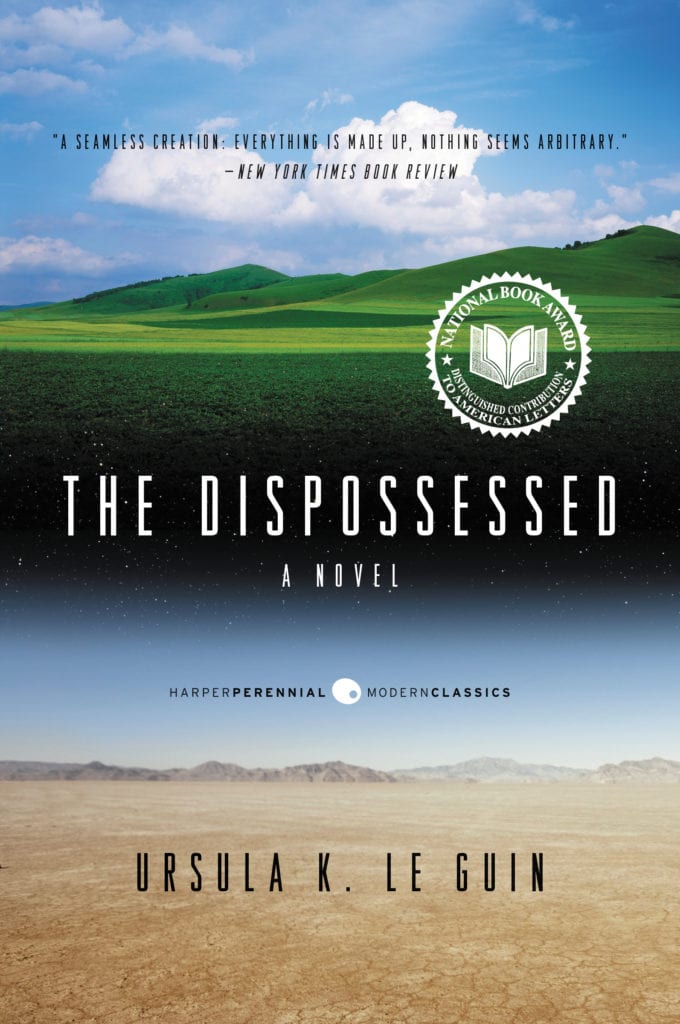
Activity: Fishbowl Discussion
Divide your favorite discussion questions from The Dispossessed teaching guide and use them for a fishbowl discussion. Arrange your seating into an inner and outer circle, then let the inner circle discuss the first list of questions as the outer circle watches and takes notes. Give the outer circle a few minutes at the end of the first discussion to add ideas or contradict arguments. Then switch and let the other half of the class move to the middle to discuss the second list of questions. Again, give the listeners a chance to weigh in at the end.
Sample Discussion Questions:
- How is Shevek as a narrator? Do you find him reliable?
- A main symbol of Odonianism is the circle. How are circles used in Odonianism? How do circles apply in other ways to The Dispossessed?
- Labor relations: What are the philosophies of Anarres and Urras on work and workers?
Activity: Write and Film a Short Video
Consider letting students learn about filmmaking by having them shoot and produce one-minute video responses to discussion questions from The Dispossessed teaching guide. Then stage The Argument Awards video screening, watching all the films and letting students vote on awards like Strongest Textual Evidence, Best Film Production, Most Intriguing Argument, etc.
Sample Writing Prompts:
- What parts of the genre of science fiction does The Dispossessed challenge the most?
- How does The Dispossessed imagine different utopias? What does the novel critique about utopia?
- Would you describe The Dispossessed as a feminist novel? Why or why not?
Get the Free Teaching Guide for More Discussion Questions & Writing Prompts for The Dispossessed
Hidden Figures
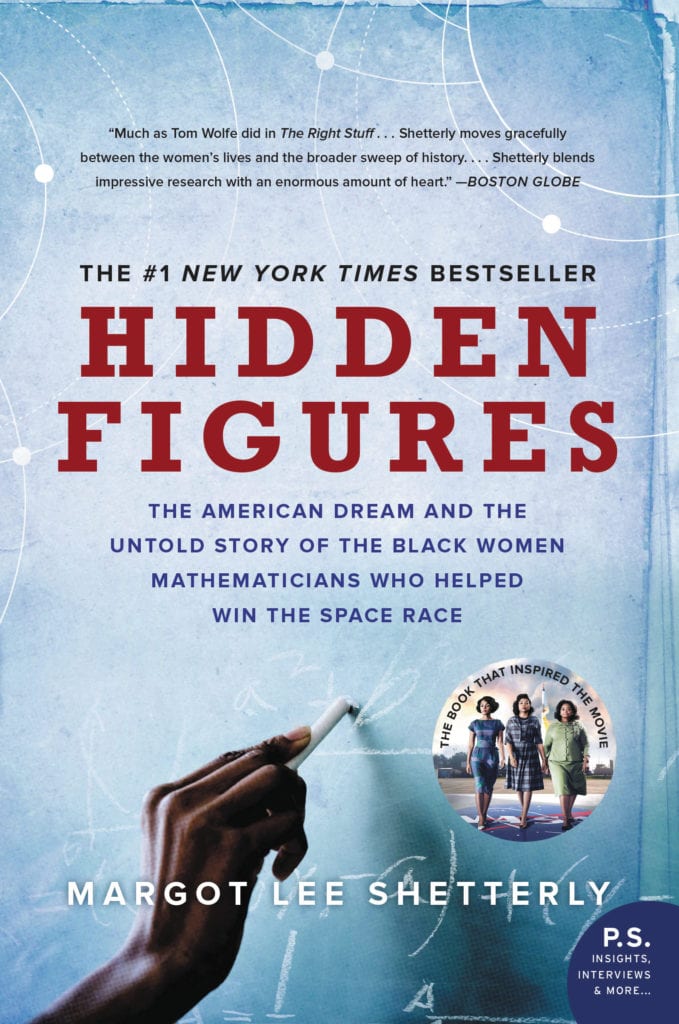
Activity: Rotating Circle Discussion
Let students stand up and form into two circles, one inner and one outer. The inner circle faces out. The outer circle faces in. Everyone should have a partner. Then announce a discussion question from the Hidden Figures teaching guide and ask them to talk about it for one minute. Then rotate one of the circles. Discuss the same question for a few rotations, then move on to a new question.
Sample Discussion Questions:
- Are the women who become “girl computers” held to a higher standard? Or do they hold themselves to one? Why or why not?
- How do you think Langley employees reconcile the difference between the work they do that is innovative and advances humankind with the work they do that destroys it?
- How does the black press link the desegregation of southern schools and the launch of Sputnik? What do you think is the reason behind doing so?
Activity: 15-Minute Writing With Partners
Throughout your unit, pull your favorite writing prompts from the Hidden Figures teaching guide and give students fifteen minutes to write. Then have them star their best paragraph and share it with a partner for feedback. Let them know at the end of the unit they’ll be choosing their best-written piece to turn in for a grade.
Sample Writing Prompts:
- Hidden Figures uncovers the story of the women whose work at NACA and NASA helped shape and define US space exploration. Taken as a whole, why is their story significant to our cultural, social, and scientific history?
- Would you consider NACA and NASA socially progressive institutions for their time? Why or why not?
- In advocating for herself to work on the Mercury capsule launch, Katherine says to her bosses, “Tell me where you want the man to land, and I’ll tell you where to send him up.” How are the women in Hidden Figures able to express confidence in their work and abilities? In what ways is that confidence validated by their coworkers? Why is this emotional experience such an important part of their story?
Get the Free Teaching Guide for More Discussion Questions & Writing Prompts for Hidden Figures
To Kill a Mockingbird

Activity: Quick Discussions to Check Reading
Pulling one or two questions from the To Kill a Mockingbird teaching guide can make for an easy and quick reading check quiz. Because they require such in-depth thinking, getting a quick summary online or asking a friend about the reading won’t help.
Sample Discussion Questions:
- Why do you think Atticus’s first two clients gave him a “profound distaste for the practice of criminal law” (p. 5)? What does this suggest about Atticus’s values?
- What does Scout’s observation that she “inched sluggishly along the treadmill of the Maycomb County school system” suggest about her experience in public school? And what do you think she means when she says she had the impression she was being “cheated out of something” (p. 37)?
- Summarize Scout’s criticisms of her father. What do her criticisms reveal about the values of her community? How do most people in Maycomb County define “manliness”?
Activity: Inspiration for Writing Project Development
You can also use the writing prompts from the To Kill a Mockingbird teaching guide as inspiration for developing projects. Perhaps students might create graphic essays or spoken-word pieces in response to prompts like these.
Sample Writing Prompts:
- Atticus Finch is one of the great role models in literature. Throughout the novel, he sets an example for his children through his words and actions. Look carefully at his character and find specific examples of moments when Atticus acts as a role model for Scout and Jem. Analyze each of these examples by looking at what Atticus says or does and the lesson you think his words and actions teach his children; then, find evidence in the text that shows that Jem or Scout have been positively influenced by their father’s example. Make sure to include correctly cited quotes from the text as evidence for your analysis.
- Examine the role that gender plays in the novel. How does the fact that she is a girl impact Scout? What experiences is she excluded from? What experiences is she included in? How are society’s expectations different for her than they are for her brother? Do Dill and Jem face similar pressures to conform to gender expectations? Cite specific examples and evidence from the text to develop your thesis.
- Write an analytical essay that examines the role of prejudice in the book. Is prejudice limited to racial prejudice, or are there other types of prejudice as well? What do you think the novel suggests about the way to overcome prejudice? Use specific examples and quotes from the text to develop your thesis.
The Alchemist
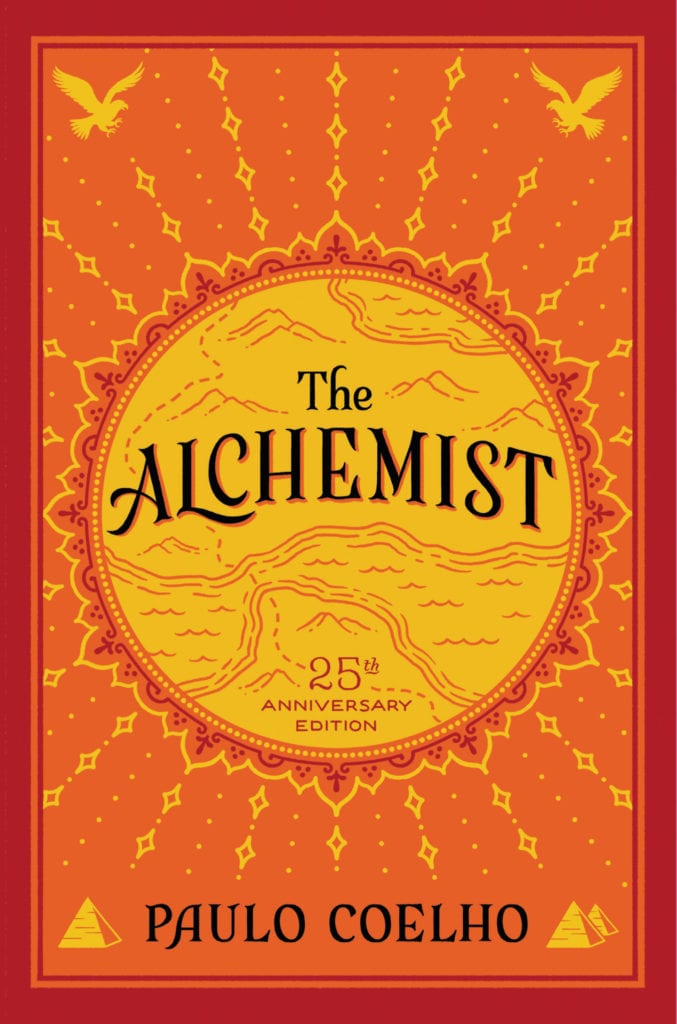
Activity: Silent Small-Group Discussion
Try a silent small-group discussion using your favorite discussion questions from The Alchemist teaching guide. Give each member of a small group a piece of paper with a question written at the top. Then have everyone respond for three minutes. Call for everyone to pass their papers to the right, read the question and first response, and add a second response. Continue until everyone has participated in the silent discussion for all the questions given to the group. Then let the groups talk aloud about the questions.
Sample Discussion Questions:
- The alchemist says that “people become fascinated by pictures and words, and wind up forgetting the language of the world.” What is this language of the world, or “universal language” as it is called elsewhere in the novel? How is it different than ordinary language? Is it spoken or expressed in some other way? Why would a fascination with words and pictures make people forget it?
- The alchemist says that for the boy to find his treasure he must listen to his heart. Why does the alchemist feel that the heart is more important, or more trustworthy, than the mind? How and why is the heart able to understand things the mind can’t grasp?
- If you could ask Paulo Coelho one question, what would it be?
Activity: Create a Curated Writing Project
Guide students in creating a curation project in response to their chosen research prompt from The Alchemist teaching guide. Rather than write a paper, have them curate key articles, videos, illustrations, podcasts, etc. from the web relating to the topic onto a Google Doc or simple website and bind them all together with their own analysis.
Sample Writing Prompts:
- Research the history of alchemy and explore the ways Coelho uses the concepts and practices of this mystical science in The Alchemist. You might want to consider the relationship between alchemy and the Pyramids; alchemy in Christian and Islamic cultures; or alchemy as a means of both material and spiritual transformation.
- In The Alchemist, King Mechizedek explains the principle of “favorability,” or beginner’s luck, a concept that is also important in Zen Buddhism, which emphasizes “beginner’s mind.” Do some research on this topic and discuss how it works in the novel. In what situations does it help Santiago? Why would a beginner be luckier than someone with more experience? Have you ever benefited from beginner’s luck or witnessed someone else who did something surprisingly well the first time?
- Many spiritual quests involve a journey into the desert. Research the subject of desert spirituality and discuss the relationship between the outer landscape and inner world in The Alchemist. In what ways is the desert the perfect landscape for a spiritual journey? What does Santiago learn about himself from the desert?
Get the Free Teaching Guide for More Discussion Questions & Writing Prompts for The Alchemist
The Essential Ginsberg
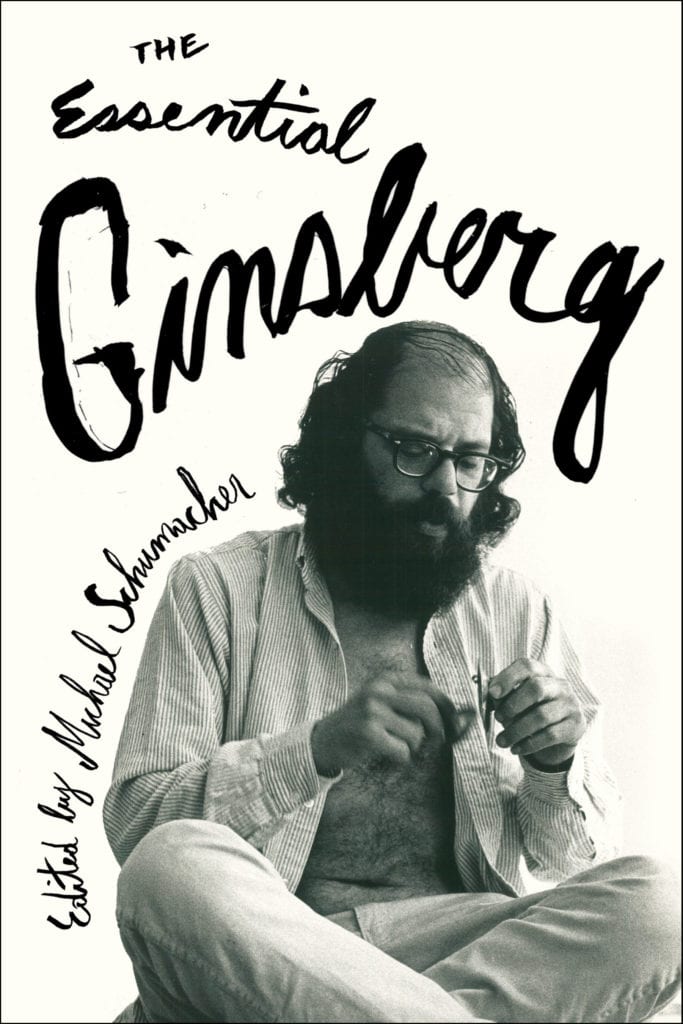
Activity: Google Slide Series Discussion
If your classroom is 1:1, try putting up a Google Slides series with a question from The Essential Ginsberg teaching guide at the top of each slide. Give students group access, then fifteen minutes to add responses, images, quotes, etc. to the slides in response. Then put the slides up one at a time and discuss what you see as a class.
Sample Discussion Questions:
- Is “To Aunt Rose” a successful elegy in your opinion? Why or why not?
- In what ways is “Kaddish” a poem of thanksgiving and praise, like the traditional mourner’s kaddish?
- Is the poem an effective antiwar poem? Why or why not? Support your response with solid evidence from the poem.
Activity: Writing Skills Practice
If you’d like students to focus on one particular skill—like writing a strong thesis or providing an embedded quotation—give them several writing prompts from The Essential Ginsberg teaching guide and have them practice the skill over and over, instead of writing full essays on one prompt.
Sample Writing Prompts:
- Write a short argument for or against Shelley’s statement, “Poets are the unacknowledged legislators of the world.”
- Think about the final sentence of the essay: “Everything belongs to me because I am poor.” Discuss what that unusual sentence might mean in terms of the Beats.
- Imagine that “Kaddish” has just been published. How would you describe the “plot” of the poem? Would you praise it or not? What poem-based evidence would you give to support your perspective on the poem?


